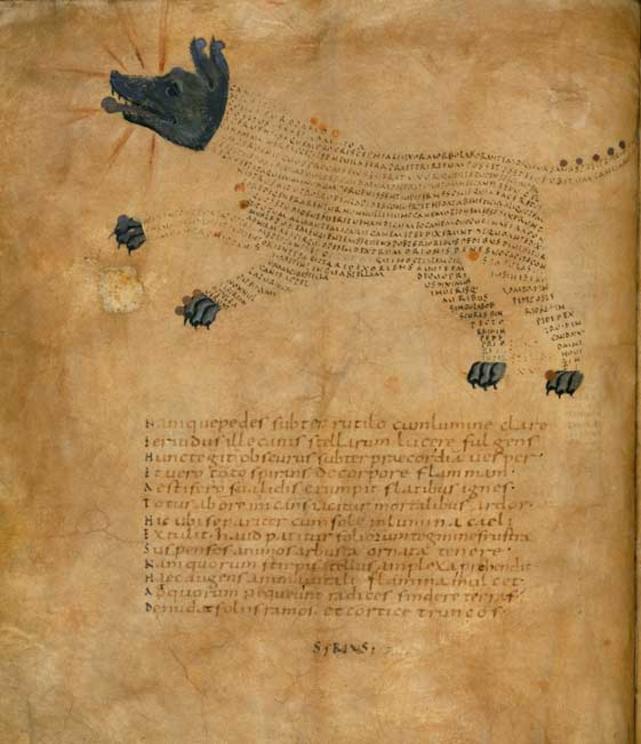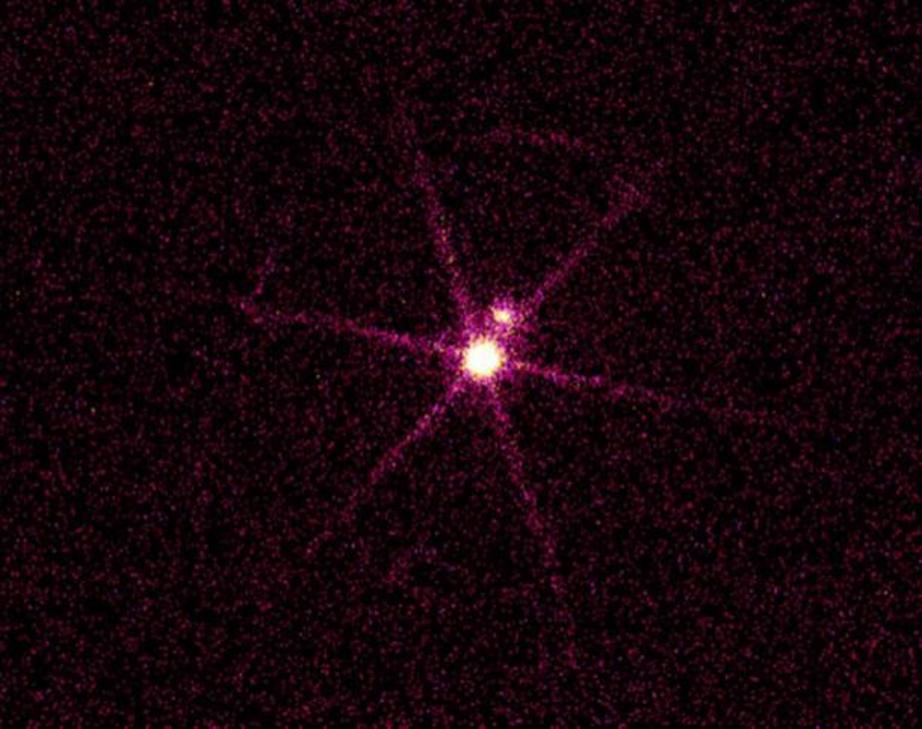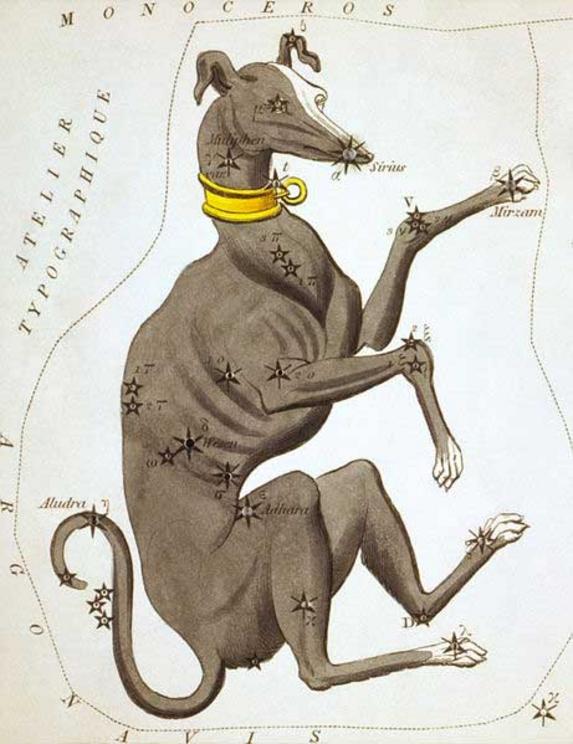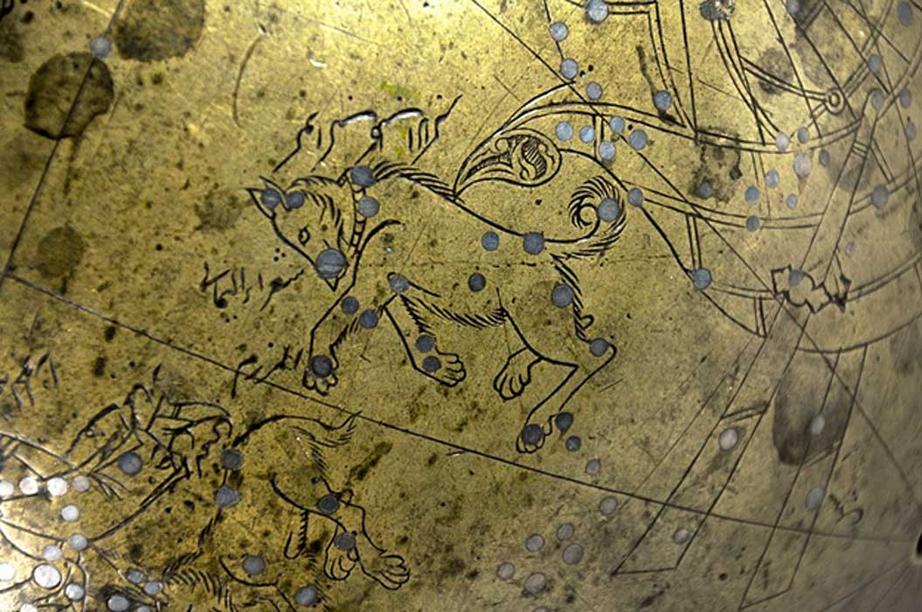What is so special about Sirius, the Dog Star?
The accolade of ‘brightest star in the sky as viewed from Earth” goes to the well-known star Sirius, also popularly called the “Dog Star”, due to its role as the dominant star in the Canis Major (Greater Dog) constellation. Being such a visible heavenly body, it has been the object of wonder and veneration to ancient peoples throughout human history.
The Dog Star of Earth
Interestingly, totally separate ancient cultures with no apparent communication have related the brlliant Sirius with either a wolf or a dog. In ancient Chaldea (present day Iraq) the star was known as the "Dog Star that Leads". In ancient China, the star was identified as a heavenly wolf. And in Assyria and Akkadia, it was said to be the "Dog of the Sun”. To add to the list, North American indigenous tribes have talked of the star in canine terms: the Seri and Tohono O’odham tribes of the southwest describe Sirius as a “dog that follows mountain sheep”, while the Cherokee paired Sirius with Antares as a dog-star guardian of the “Path of Souls”. The Skidi tribe of Nebraska knew it as the “Wolf Star”, while further north, the Alaskan Inuit of the Bering Strait called it “Moon Dog”.

A 9th-century astronomical manuscript, including an illustration of the constellation "Sirius" (CC0)
The Sirius system, only 8.6 light-years from Earth, is the fifth closest stellar system known. The name Sirius is derived from the Ancient Greek ‘Seirios’, which means ‘glowing’ or ‘scorcher’. The brightest star has been important in astronomy, mythology and occultism for thousands of years, which is evidenced by its inclusion on artifacts from ancient civilizations. In the ancient Vedas of the Indian subcontinent, this star was known as the Chieftain's star; in other Hindu writings, it is referred to as Sukra, the Rain God, or Rain Star. The celestial movement of the star were used to mark or predict events on Earth. The heliacal rising of Sirius coincided with the flooding of the Nile in Ancient Egypt and the "dog days" of summer for the ancient Greeks (the hottest, most uncomfortable days of summer, so named due to their connection with this rising of Sirius), while to the Polynesians it marked winter and was an important star for navigation around the Pacific Ocean. The course of the star was also observed and revered by Sumerians, Babylonians and countless other civilizations. The star was therefore generally treated as sacred and its appearance in the sky was accompanied with feasts and celebrations.

Sirius, the brightest star in the night sky. (CC BY-SA 3.0)
For Ancient Egyptians, Sirius was unrivalled as the most important star in the sky. Indeed, it was the foundation astronomically of the Egyptians’ entire religious system. The majority of their deities were connected, in some way or another, with the star. The Egyptian calendar system was based on the heliacal rising of Sirius that occurred just before the annual flooding of the Nile during summer.
Mysterious Stellar Knowledge
A controversial book called The Sirius Mystery by the American author Robert Temple was published in which the author claimed that the Dogons (an ancient African tribe from Mali) knew details about Sirius that were impossible to know without the use of telescopes. According to him, the Dogon understood the binary nature of Sirius, which is, in fact, composed of two stars named Sirius A and Sirius B.

The Chandra X-ray image of Sirius A & B, a double star system located 8.6 light years from Earth, shows a bright source and a dim source. This is not visible with the naked eye. (Smithsonian Institution)
It seems that Sirius still forms an important part of religious beliefs and spiritual practice. The Dog Star is thought to be the central focus of the teachings and symbolism of some secret societies that survive until this day.
So, from the beginning of civilization to modern times, from remote tribes of Africa to the great capitals of the modern world, Sirius was, and still is, associated with divinity and regarded as a source of great knowledge and power. The star that shines brightest to us here on Earth certainly seems to hold a special symbolic importance to mankind.

Crop of "Canis Major, Lepus, Columba Noachi & Cela Sculptoris", plate 30 in Urania's Mirror. (Public Domain)

Canis Major as depicted on the Manuchihr Globe made in Mashhad 1632-33 AD. Adilnor Collection, Sweden. (CC BY-SA 4.0)
For the rest of this article please go to source link below.
